To tell you the truth, if you’d asked me just a few years ago, I would have probably struggled to point Georgia precisely on a map, let alone to name anything typically Georgian. The country just hadn’t yet attracted my notice.
But every now and then I would hear tales of Georgia from the few travellers who’d been — and they would speak of it with a glint in their eyes. I sensed a deep-felt enthusiasm for Georgia from those who’d been, which made me finally want to see it for myself.
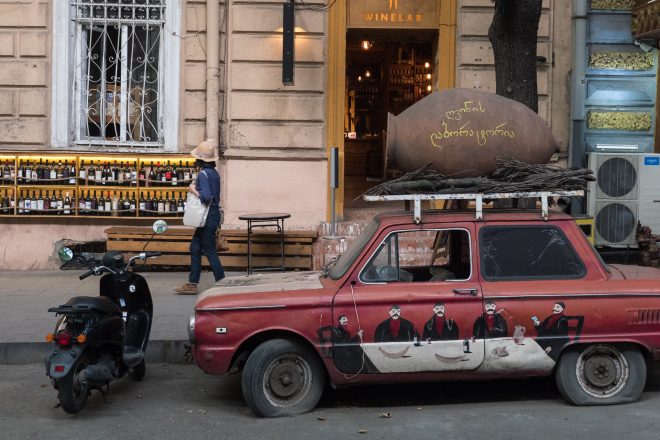
And, let me tell you, Georgia stole my heart! I love this country and would go so far as to say I developed a bit of a fascination with it.
This bite-size country in the Caucasus defies what you might expect from a still-redeveloping post-Soviet state. Yes, its infrastructure is poor and many of the buildings are crumbling — which also lends the country a certain charm — but Georgia also has a spring in its step. It’s quirky, welcoming, not to mention incredibly cheap and easy to travel in.
If you’re thinking of travelling or backpacking in Georgia, I think there are three things that make this country stand out in particular.
Plan and book your Georgia trip
Firstly, it’s the capital of Tbilisi. I felt this city alone was already worth the price of coming to Georgia. There are loads of things to do in Tbilisi. It may not be the most prosperous or famous city in the world, but it has seen some major revitalization, and its charm and warmth just made me want to stay there longer.
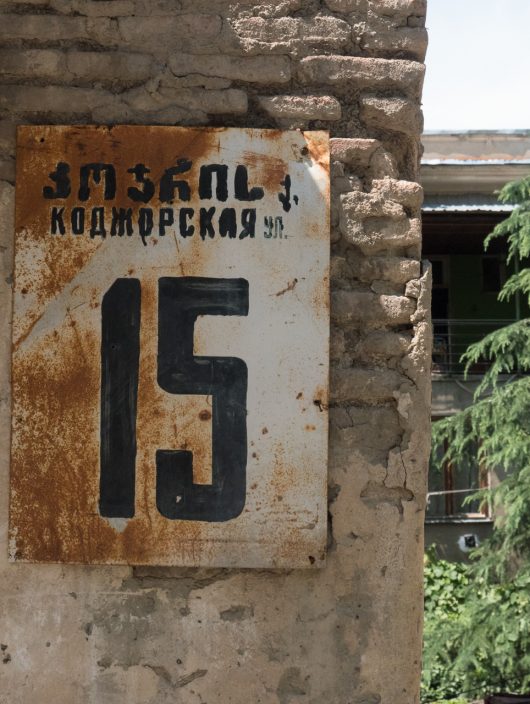
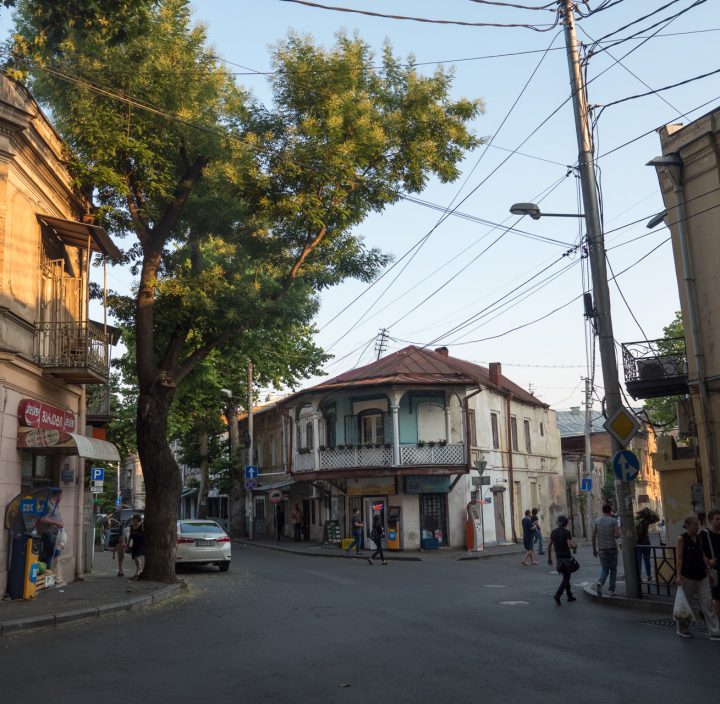
Secondly, the Caucasus mountains are simply stunning. If you enjoy mountain hikes or trekking through pastoral valleys dotted with traditional villages, then you’ve definitely come to the right place. The Svaneti and Kazbegi areas, right along the border with Russia, provide ample opportunities to enjoy Georgia’s epic nature. They’re easily the best Georgia backpacking destinations.
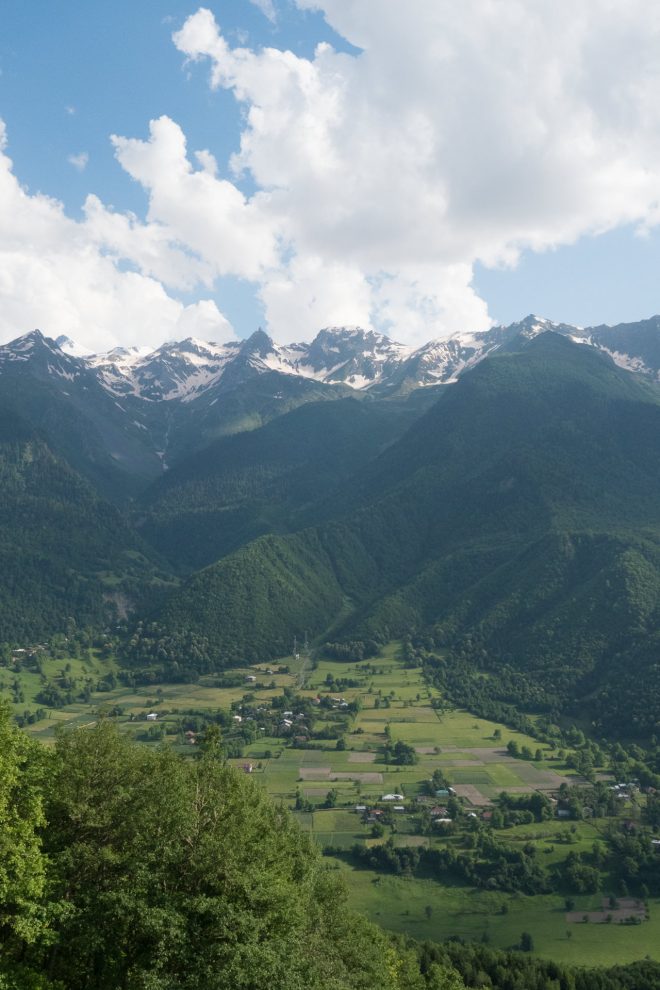
Thirdly, Georgia is filled with ancient churches and monasteries. Many of these you can find in unusual or highly scenic locations. For example, the Vardzia monastery consists of a system of caves dug into the side of the Erushili mountains. Other monasteries sit on top of hills or mountains overlooking nearby towns. The Caucasus was one of the earliest regions where Christianity became established and Georgia was once one of the first Christian states; today it’s still a deeply pious society, mostly following the Georgian Orthodox Church.
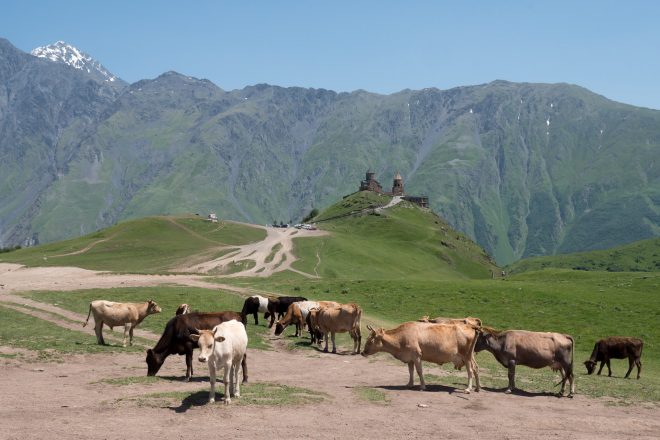
Some may say that the Black Sea coast is another key reason to visit Georgia, but I thought the resort city of Batumi was a bit of a let-down (but, as always, that might be just be me). If you are a backpacker, adventurer, or culture lover, then I think Tbilisi and the Caucasus are your first places to look.
Where to go in Georgia
Georgia is a relatively small country, so you probably don’t need to overthink your travel route. There isn’t a standard way to travel through Georgia, so you might just want to decide what places are most interesting to you and then try to connect the dots.
You can get started in the capital Tbilisi, and then go into any direction from there. The location of Tbilisi and the way that roads and railways are laid out mean you may have to backtrack to the capital once or twice, but since it’s this is such a charming city this should be hardly an issue.
Try to spend as much time in the mountains as you can — if you ask me, this is where Georgia is truly at its best!
I doubt luxury travelers would be all that excited about Georgia, but it’s just the perfect country to go backpacking. Just hop into a Marshrutka (the local flavour of shared minivan) and head to your next destination! The roads may be a bit bumpy at times, but it’s a fun adventure.
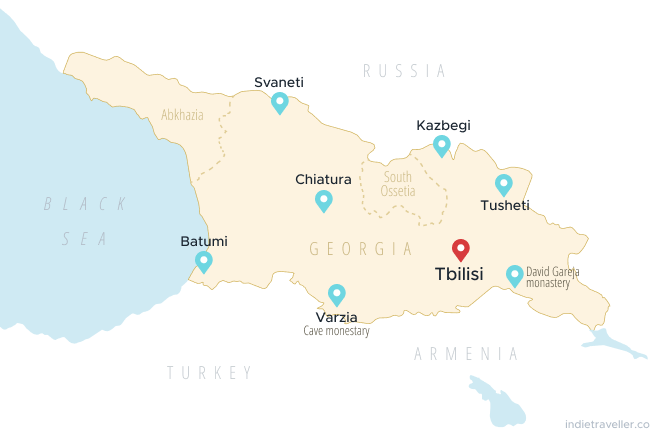
One week in Georgia
If you have just one week in Georgia, I would probably suggest that you share your time between Tbilisi and the Kazbegi area, as this itinerary will be quite lean and focused.
For example, you can spend 2 days in Tbilisi, 3 or 4 days in Kazbegi, followed by another 1 or 2 in Tbilisi (with potential day-trips in the area).
The town of Stepantsminda in Kazbegi is just 3 hours by minivan north of Tbilisi, and the region is home to many snowy peaks, mountain trails, and hilltop monasteries. By focusing on just these two hubs, you can get the best of Georgian city life and see the mighty Caucasus range, without having to travel around a whole lot.
Two weeks in Georgia (or longer)
With at least two weeks in Georgia, you can cast a wider net. You can make the long way to Svaneti, which is a great base for mountain trekking much like Kazbegi, but it’s more remote and, I think, of more unique cultural interest. You can do many multi-day treks here past mountain villages, as well as shorter day-treks and trips up the mountain by cable car or ski lift around the town of Mestia. You can also go east from Tbilisi into the winemaking region of Kakheti, or south to the cave monasteries of Vardzia or David Gareja.
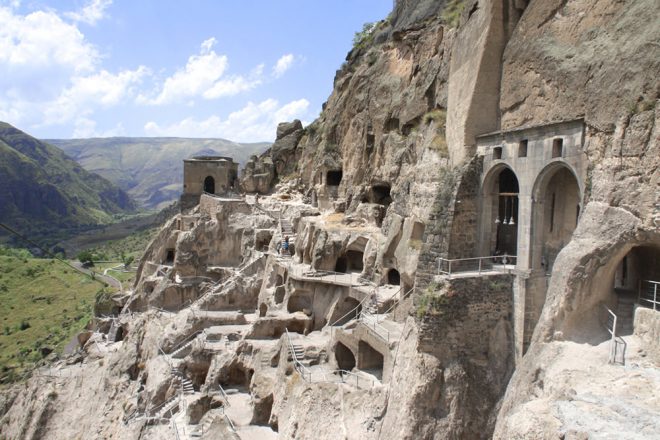
Some people also like to go to Gori, a city known for being the birthplace of Joseph Stalin, though both Georgians and fellow travellers I spoke to seemed quite unimpressed, so I gave it a pass.
If you’re looking for a beach, you’ll find this along the Black Sea. The booming resort city of Batumi is highly commercial though. It has many casinos and large hotels, and only stony beaches with murky waters. It’s probably a love-it-or-hate-it kind of place.
Another hotly tipped region for mountain treks is Tusheti. I did not get to visit it during my trip, but I still mention it here, as I met a few other travellers who were quite visibly excited about this more remote region.
Of course, if you have enough time, why not add on another country to your travel plan? Keep in mind that travel visas to Russia are usually a real pain to arrange, so even though it’s close, north is not the obvious direction to go. Many end up travelling onwards to Azerbaijan, Armenia, or Turkey.
Places to visit in Georgia
Tbilisi
Georgia’s quirky and charming capital
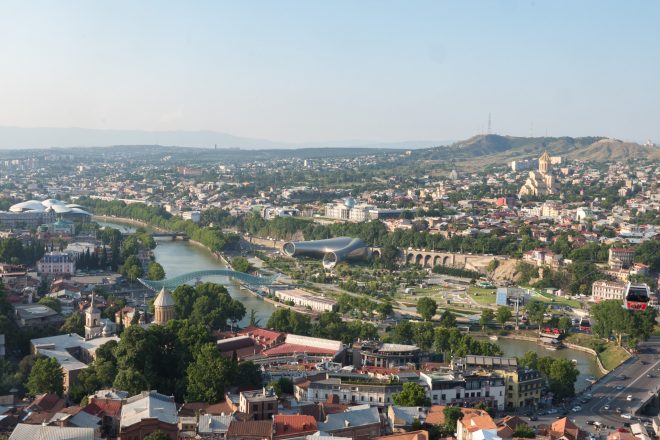
I loved Tbilisi! I ended up spending 6 days there, on and off, while I travelled around the Caucasus. If you don’t have much time, I think you can get a good taste of the city in 2 or 3 days, but it can certainly be worth a longer stay if you’re into the vibe.
Tbilisi’s old town is very walkable, the other neighborhoods are easily reached via taxi or metro, and it’s a pretty low-stress and gentle city.
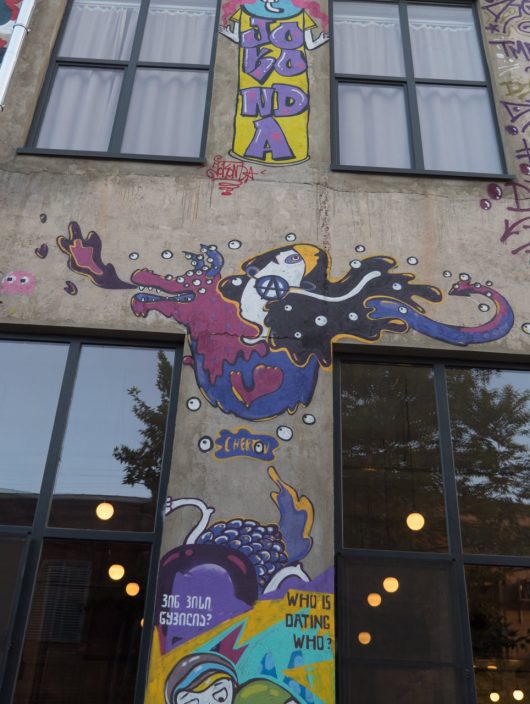
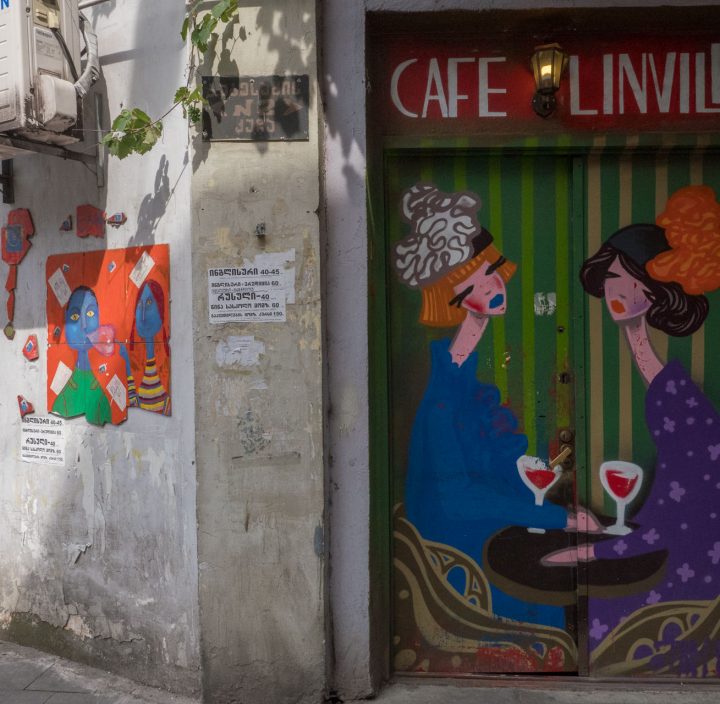
The unique character of Tbilisi is thanks in large part to its weird architectural hodgepodge of old Medieval churches, traditional Italian-style courtyards, modernist relics from Soviet times, and a number of daring contemporary showpieces. Be sure to explore its many corners and delight in the odd mix of architectural styles and welcoming atmosphere.
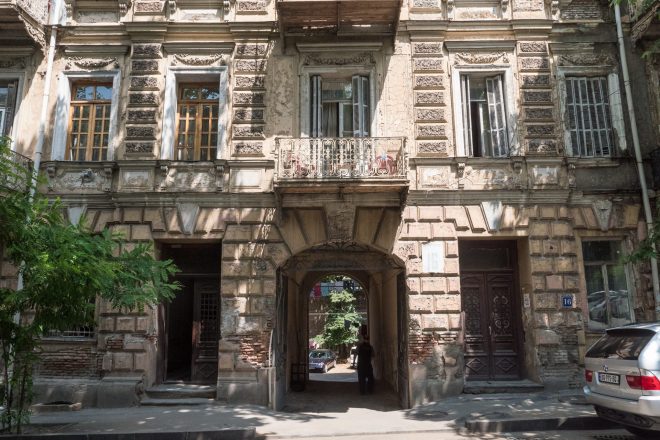
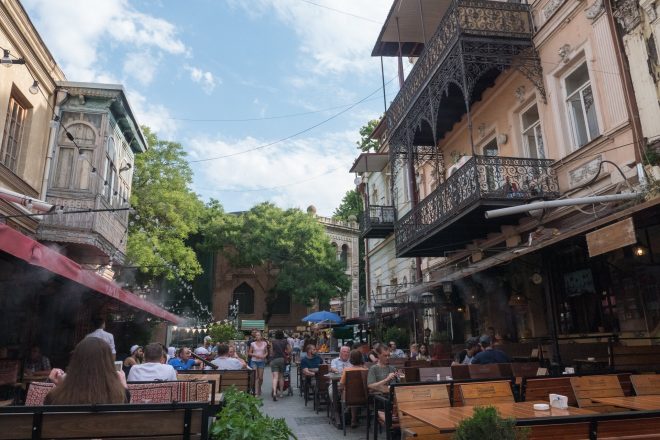
Since there is so much to see and do in Tbilisi, I created a separate guide just for the capital. Be sure to give it a read as it will not only cover the key attractions, but also which neighborhoods to stay in (I stayed in three different ones) and a few golden tips for how to meet locals.
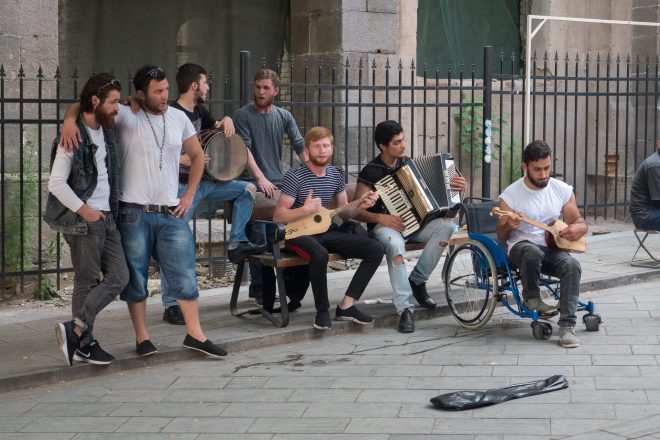
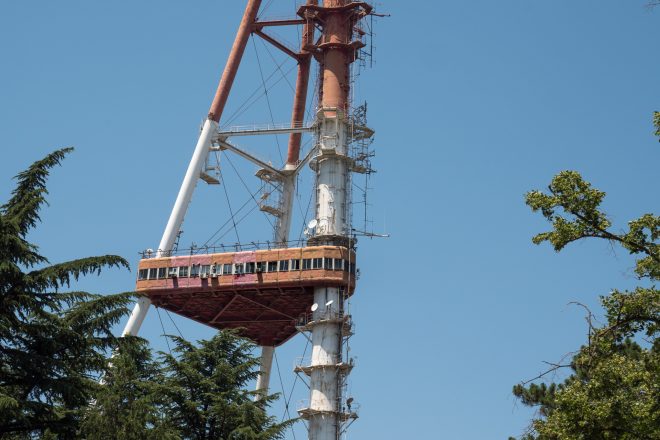
Mtshketa
Seat of the Georgian Orthodox Church
Just 40 minutes from Tbilisi is the town of Mtshketa, a UNESCO World Heritage site. It’s in Mtshketa that Georgia adopted Christianity in 334 AD and it’s still the seat of the Georgian Orthodox Church today. The town is quite small and walkable, though you might also wish to go slightly out of town and take the short hike up to the hilltop monastery.
When I visited Mtshketa it was pushing 40 degrees C (it was in June) and so I spent most of my time hiding in the shadows, but with slightly less intense heat it should be a nice town to explore. The sights might need a bit of context to truly come alive, so you might want to spring for a good guide to tell you about the ancient churches and monasteries.
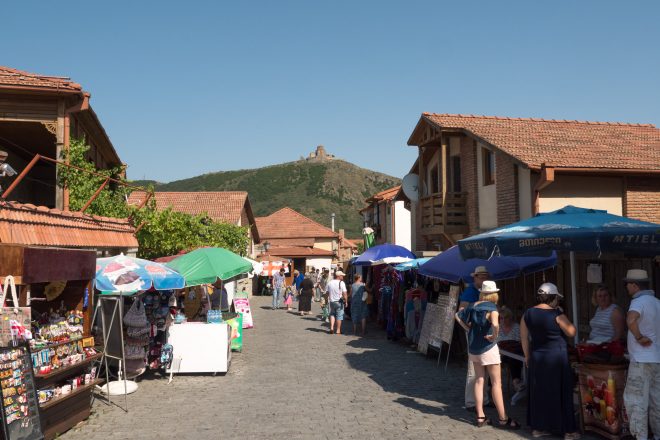
You can reach Mtshketa by taxi or minivan or, better yet, by boat. Tourist ferries leave all the time from the area near the Peace Bridge along the old town. The full experience takes a few hours.
Kazbegi mountain region
Caucasus peaks closest to Tbilisi
From Tbilisi, it’s just a 3-hour minivan ride to the town of Stepantsminda, which is a convenient base from which to explore the Kazbegi mountain region.
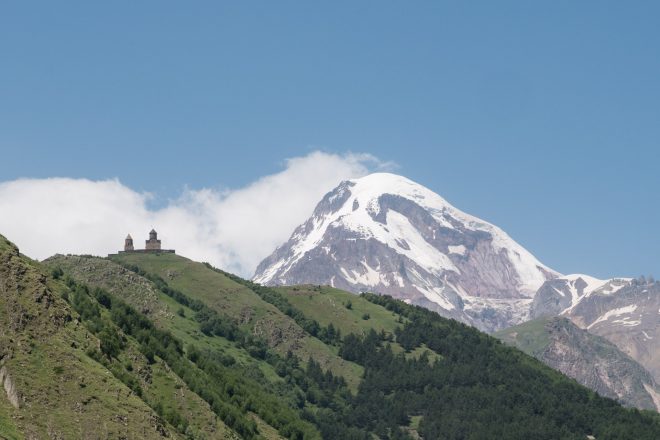
Here, close to the Russian border, you’ve got some spectacular views of the 5,033m tall Mt. Kazbek. Lording atop one of the other peaks at an elevation of 2170 meters, you’ll also find the Gergeti Trinity Church. This ancient church overlooks the town and gives you spectacular panoramic views of the surrounding mountain ranges as well.
You can reach the church by jeep, but that feels a little like cheating to me. It’s much more rewarding to go for the few hours’ hike from the town. The church also makes for a useful waypoint for anyone doing longer treks through the area, like the Gergeti Glacier further west.
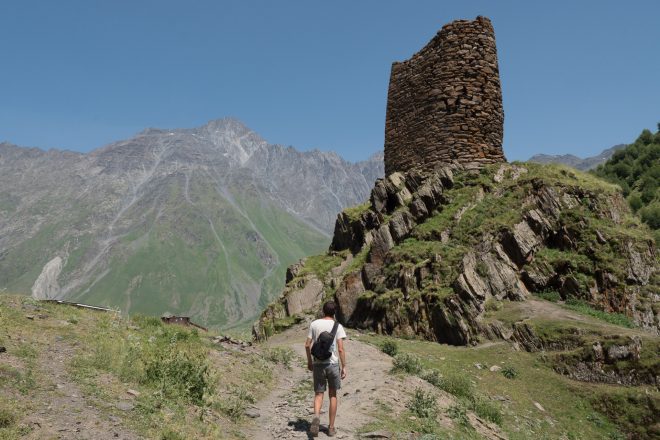
Stepantsminda and its surroundings are absolutely breathtaking and well worth the trip. There are some chalet-style buildings in town and a few other winter facilities for skiers, but Stepantsminda seems mostly a base for trekkers and climbers. The town of Gudauri, further south, is said to function more as a ski resort. I felt Stepantsminda was a more suitable place to go for backpackers or cultural travellers.
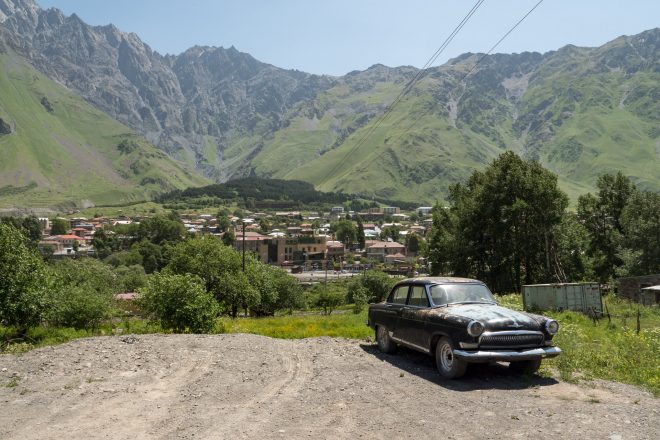
Svaneti mountain region
Remote and culturally distinct region
Svaneti (or Svanetia) is a historic province of Georgia, home to the Svan ethnic and linguistic subgroup. Much like Kazbegi, the Svaneti region lets you explore the beautiful Caucasus mountains, though it’s also a bit more culturally peculiar.
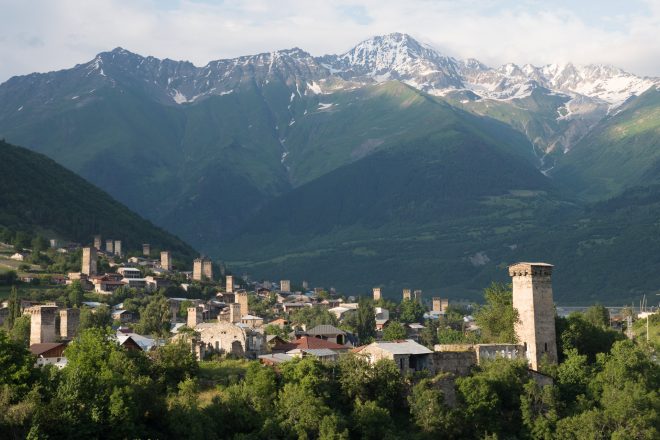
You’ll immediately notice the ancient guard towers poking up from most of the villages. They were once built to defend against marauding Mongols, and while they were never used for this purpose, they lend a unique look to the towns in the area.
It’s still a mystery to me why the people here never pooled their resources and built themselves a big ol’ fort, and instead had every household defend themselves with their own guard tower. Perhaps there was some strategic benefit to this elaborate Tower Defense setup? In any case, it lends a unique look to all of the villages.
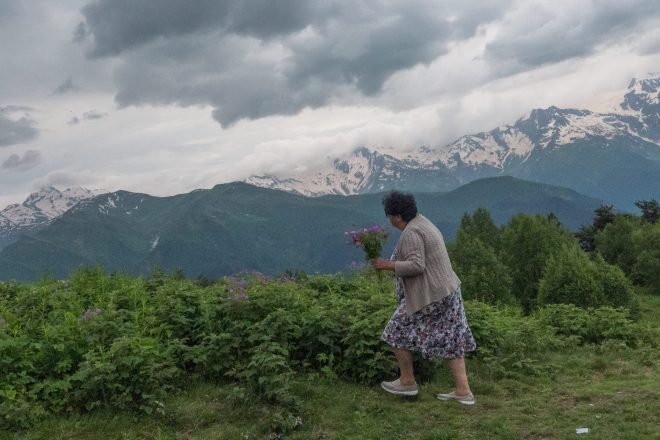
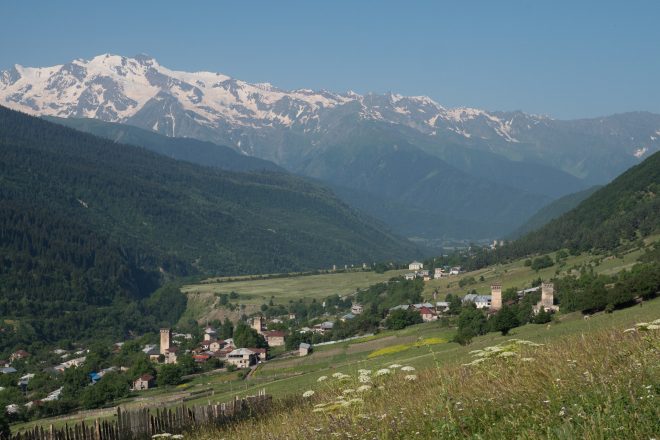
I stayed in the town of Mestia, which seems to be the place that most backpackers and trekkers go to. It’s a peaceful and rural town with the odd chicken running around or cows on the road. It also functions as a small ski resort with several lifts running up the hills, though the actual resorts are hidden behind the mountains, and Mestia itself just has local guesthouses and such. If you’re lucky, you might catch some locals singing in harmony and making a kind of choral music that is typical to the area.
Mestia is a great base for trekking, the most popular being the 4 to 5-day trek from Mestia to Ushguli. It’s of moderate difficulty, running mostly through a valley, and passing many traditional Svan villages with guesthouses where you can stay the night.
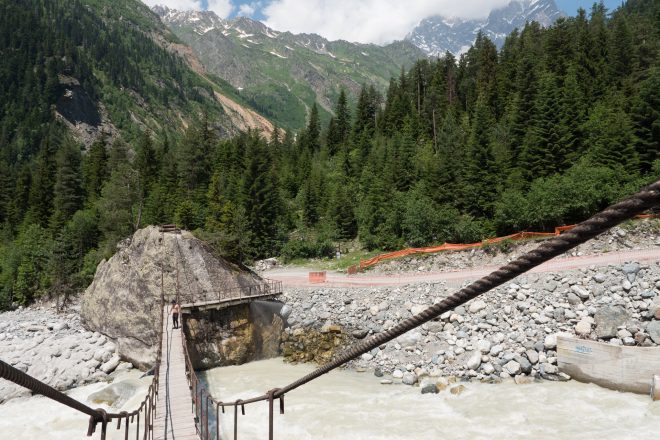
A nice day-hike goes up to the Chalaadi Glacier. It passes through some forest and then on to the glacier, with beautiful views of Ushba. The paved road running north from Mestia town is quite dull though, so you may wish to grab a taxi up to the start of the actual trail. At least, that’s what I did in order to get to Chalaadi and back just in an afternoon.
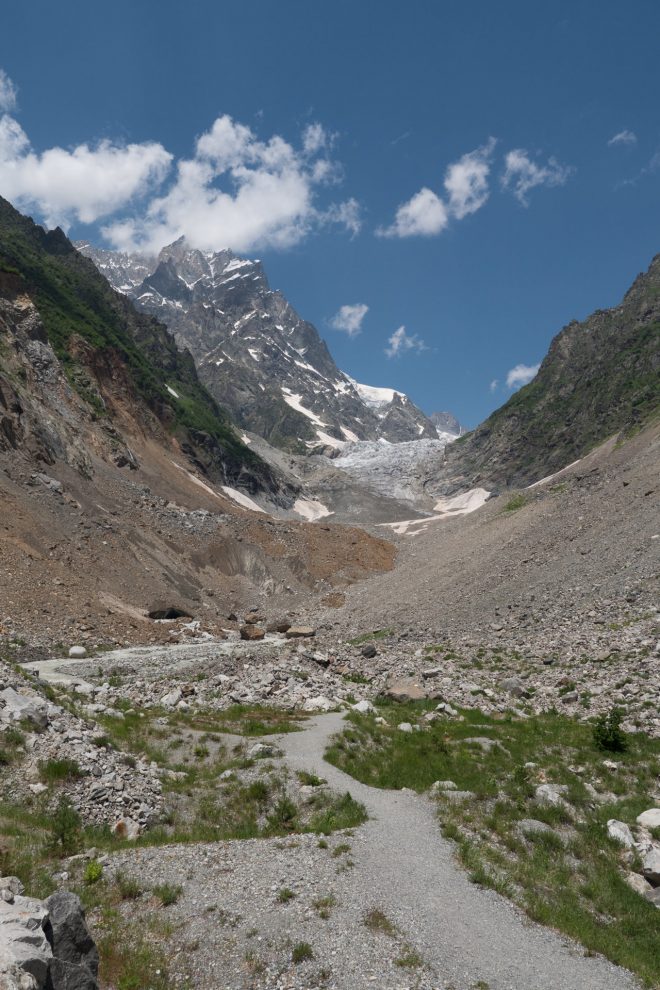
It takes much longer to get to Svaneti from Tbilisi than to Kazbegi. Count on needing pretty much a whole day to get there, unless perhaps you take one of the rare and usually-booked-out propellor flights to its tiny airport. The area has always been quite remote, and it still has only one long dead-end road, but it’s well worth making it all the way there.
Batumi
Modern resort city on the Black Sea coast
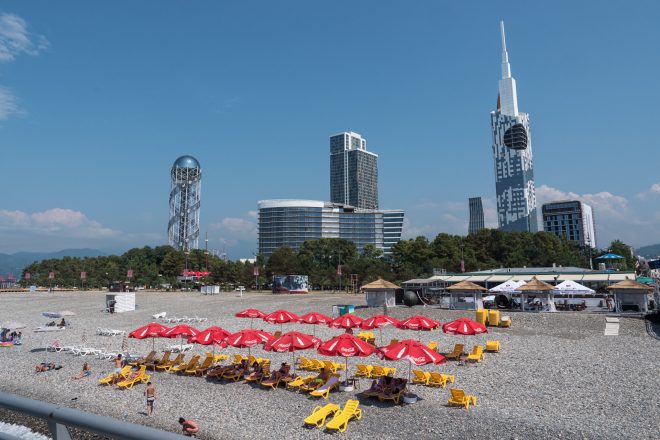
Batumi is Georgia’s second-biggest city and, thanks to its location along the Black Sea, it is hugely focused on tourism. Instead of the small-scale tourism elsewhere, Batumi was built from the ground-up as a resort (going back many decades) with a lot of prestige hotels, recreational areas, and casinos.
Some travel guides try to sell Batumi as more of an authentic place, making a big deal of its supposed “belle époque elegance”, but I quite struggled to appreciate it. It’s mostly a garish resort, mainly intended for Azerbaijanis to go gambling or for Russian families to go on a Black Sea holiday. I guess if you like to stay in a Sheraton hotel and go to the spa, the tennis club, and to the Aqua Park, then Batumi is the place to be. If you’re more into other things, then maybe not.
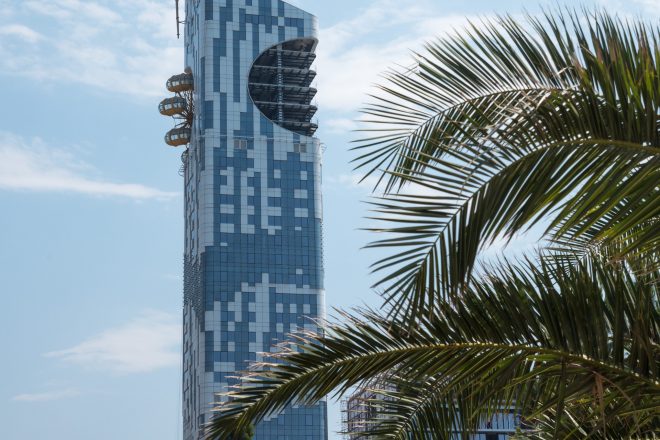
Batumi didn’t really click for me, though I should also not be too one-sided, as it does have an old centre and there’s more to it than just the beach boulevard. I’ll say that some of the architecture in Batumi is quite creative and quirky. And in a certain light, it’s an interesting place, even if it’s just to see what Georgia’s more commercial side looks like.
One odd little element is the Ferris wheel that was built inside some of the top floors of a skyscraper, but which is now abandoned (as they couldn’t figure out how to make this work exactly). There’s a 2.5km long cable car up the hill that gives some nice views of the bay. There’s a large botanical garden that you may want to pay a visit, too.
I enjoyed reading this guide by other bloggers who came to Batumi in winter and fell completely in love with it. This just goes to show that the same place can lead to totally different experiences.
Other places to visit
In brief, here are a few other places to visit in Georgia, which you may want to look at for your trip research:
- Katskhi Pillar. This natural limestone monolith with a small church built on top is quite the surreal sight. You can read more about Katskhi pillar and the monk who lives there here.
- Kutaisi. A city in west Georgia, not far for the Katskhi pillar and the Mgvimevi monastery. You can read more about the food and sights in Kutaisi here.
- Vardzia. The site of a large cave monastery built into the Erusheti Mountain. This blog tells you more about this ancient site.
- Gori. A mostly industrial-looking city that is best known as being the birthplace of Joseph Stalin. It’s home to a rather biased museum; despite Stalin having been responsible for millions of deaths, around here they seem to think he’s a pretty cool dude. This museum does seem like a fun curiosity, though everyone who came back from Gori seemed to thinkthe city itself was not worth visiting.
- Chiatura. A small 1950s mining town that’s famous for still operating a number of rickety cable cars, dubbed “metal coffins”, that once transported miners up the surrounding hills. You can read more about these cable cars here.
Practical information
Understanding Georgia
I’ll leave it to you to dive into the full history of Georgia when you get there, but there are at least a few things that are useful to know before you go.
Geographically, Georgia has always been hemmed in on multiple sides, which has defined it throughout history up until today. In the West, you’ve got the Black Sea. In the north, there’s the Caucasus mountain range, creating a natural barrier between Russia and Georgia.
All around Georgia you’ve had different empires, like the Persians, Ottomans, and Russians. This means that many influences flowed through these parts through the ages. You’ll be able to learn a lot more about this as you tour some of the museums and cultural sights.
Georgia’s location might make you wonder what continent it belongs to. You could maybe argue it’s part of the Middle East or Central Asia. But despite being on the fringes of the European continent, most Georgians definitely consider themselves European or at least having a European perspective.
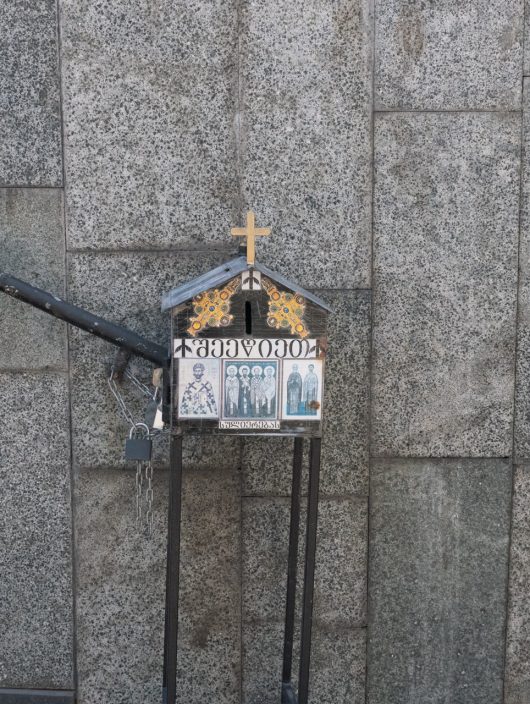
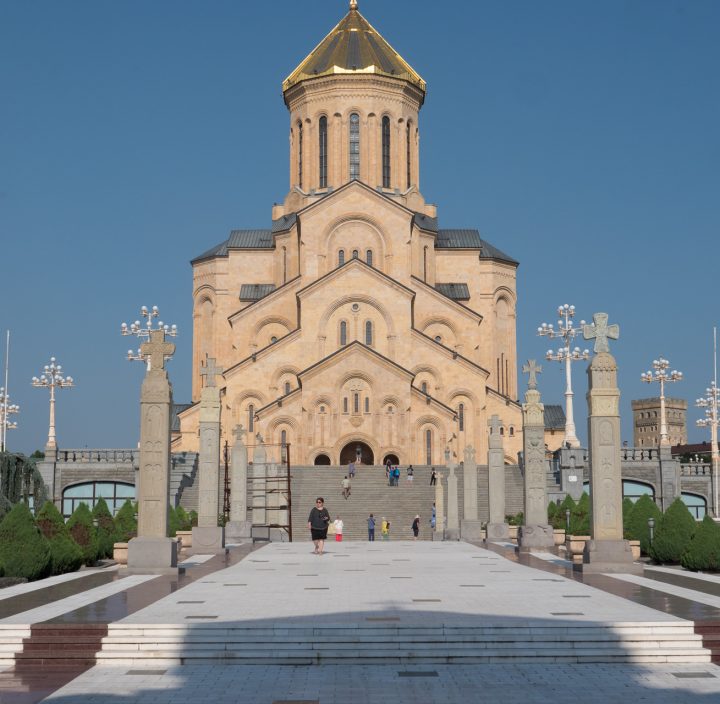
Georgia is a very pious country, mostly following the Georgian Orthodox Church.
They say Georgia is sitting at the “balcony of Europe”, and it seems many Georgians wish for the country to one day be a member of the EU. I noticed there were many European flags throughout the country and wanting to be seen as European. Joining the EU seems an unlikely prospect though for as long as Russia has anything to say about it.
You see, today there is a bit of an unusual situation in Georgia. Following its brief war with Russia in 2008, two regions of Georgia became de facto part of Russia. This concerns Abkhazia in the northwest tip of the country, and South Ossetia in the centre, which is a region roughly northwest of the capital. Travel advisories tell you not to go to these regions, though they are inaccessible for tourists anyway.
By the way, there is peace in Georgia and it’s very calm and with high levels of safety, so you have little to worry about when travelling there — but that’s not to say the geopolitical situation in Georgia isn’t unusual.
Food and drink
It seems almost obligatory for travel blogs to say “the food was amazing” regardless of country, just as seemingly every place on Earth has “friendly locals”. But please believe me when I say that the food in Georgia is actually amazing.
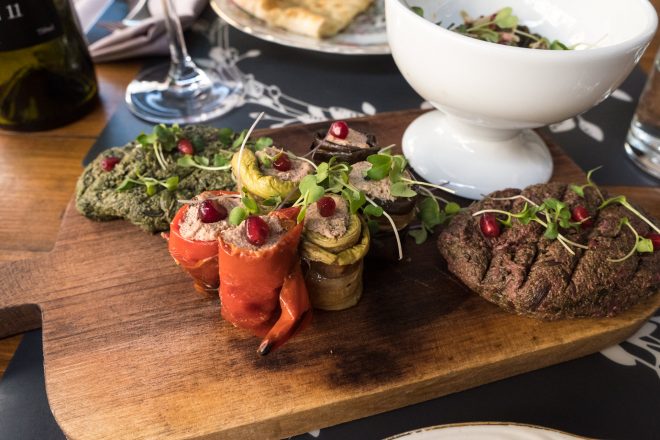
I could talk about the local dishes of Georgia, but it was firstly the quality of the ingredients that I noticed. It’s easy to taste that most of it is grown organically on small-scale farms. I’m big on veggies and was delighted by the delicious taste of tomatoes in Georgia, for instance, which were probably the best-tasting I’ve found anywhere outside of Italy.
Popular local dishes involve much walnut, pomegranate, and eggplant, all with lovely pure flavours. But if you’re more into your meat, you’ll be right at home as well. Kebabs and meat skewers are a big thing, for instance.
When you’re in Georgia, you should definitely try out these traditional dishes:
- Khinkali. Dumplings stuffed with meat and spices. Bite into them carefully and try to suck in the juices that are still inside, or you might make a big mess!
- Stuffed eggplant rolls. Georgian veggie rolls use eggplant as the container and can have a variety of stuffings, most commonly a puree with walnut.
- Katchapuri. This literally means cheese bread (Katcha = cheese, Puri = bread). It can either be bread that’s stuffed with cheese, or sometimes the bread is baked in the shape of a little boat with the cheese poured into it, or with an additional egg on top. I thought they were very heavy, but my friend was addicted to it!
- Churchkhela. This is not actually a dish but a snack found in shops and street stalls everywhere. It’s usually walnuts covered in hardened grape juice. It’s mildly sweet and very tasty!
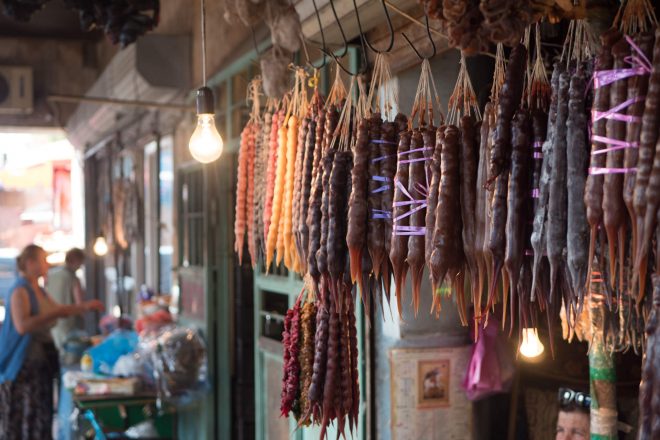
Also, if you’re in Svaneti, you’ve got to try the Svaneti salt. It’s made with a blend of salt, garlic, chili pepper, and other spices. Even just some bread baked with Svaneti salt will be very very more-ish.
As far as drinks go, you should know that Georgian is believed to be the birthplace of wine-making, with evidence of winemaking going back 8,000 years. You can go on a wine tour to learn about the very traditional ways in which wines are still made.
Georgia also has its own version of brandy called Chacha, which is not dissimilar to drinks like Pisco or Grappa. It’s heavy stuff, especially when it’s the moonshine version, but you might not get around having at least a chacha or two if you’re getting to know the locals.
Visas for Georgia
Few words need to be minced about the visa situation, as most nationalities can travel in Georgia visa-free for up one year. Yes, really!
This must truly be one of the most liberal visa regimes in the world. It not only makes Georgia easily accessible for travellers, but will surely be of interest to any digital nomads or expats wishing to stay longer.
Cost of travel
Georgia is insanely budget-friendly. Prices are closer to that of low-budget backpacking regions like Southeast Asia than almost anywhere in Europe.
I had many great meals costing just a couple of bucks. It’s not impossible to find a dorm bed in a hostel for $5 a night, or a room with shared bathroom for $12 a night — even in the capital. If you have just a bit more budget to spend, then you can sleep in nice comfort in mid-range guesthouses, chalets, and small charming hotels.
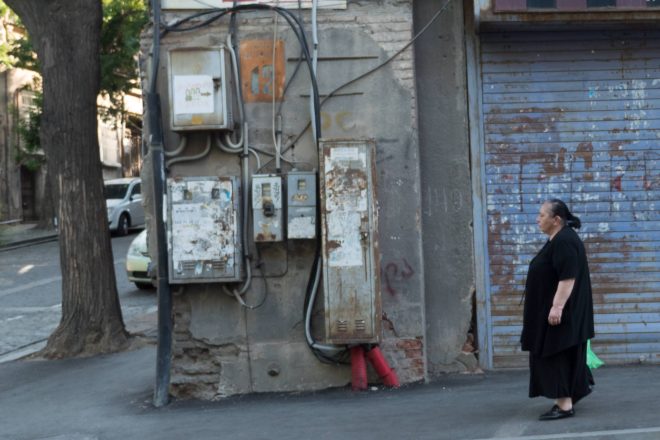
Transportation is hardly a major expense either. A minivan from Tbilisi to Batumi, a journey that takes you pretty much from one side of the country to the other, costs only about $7.50.
I got by on about $25 a day — while hardly keeping an eye on my spending. I often used taxis to get around and ate in whatever restaurant seemed convenient. If you’re on a shoestring budget, I’m sure you could manage to travel for less.
Getting around
Georgia is not too difficult to navigate, especially if you’ve been to this type of country before.
I briefly considered renting a car so I could drive around the Tbilisi area freely, but I had heard the quality of the roads in Georgia is absolutely awful (at least by European standards). This turned out to be true and so it was a lot easier just not to have to drive ourselves.
Georgia, fortunately, isn’t that big and you can hop around quite easily using public transportation. The most strenuous journey I did was from Tbilisi to Svaneti, which involved taking a Marshrutka to Zugdidi and then finding someone there to drive us to Mestia. This took a good nine hours or so, but making it all the way to Svaneti was entirely worth it.
Shared minivans are a great option for covering longer distances. Every country seems to have their own name for this type of unofficial minivan transportation, and in Georgia they are called Marshrutkas. These typically depart from a dedicated depot, though they tend to be unscheduled and make stops in lots of different places. Your best bet is to walk around looking for signs in the windshields with the name of your destination. Or, if it’s all in the local non-Western script, try shouting your destination and you’ll surely be seated somewhere within a few minutes. The vans usually wait around until they have enough passengers, which can lead to some delay, but once you’re off they’re not such a bad way to travel.
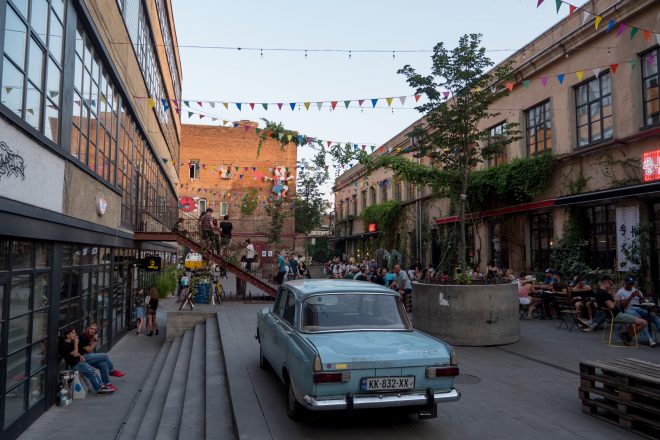
You can still see iconic old Lada cars in Georgia, though they are now mostly used as props.
Trains are another good option. I like travelling by train a lot, because even if it’s a little slower, and it doesn’t tire me as much as buses or minivans. I took the Batumi to Tbilisi train which was very comfortable and gave some nice views of the landscapes as well. If you’re going down to Armenia I can highly recommend taking the Tbilisi-Yerevan night train, which I wrote about a bit more in my impressions of Armenia.
Taxis are incredibly inexpensive, to the point where you can pretty much just use taxis to do your sightseeing in or around town. For example, I drove from Tbilisi to the town of Mtskheta, 40 minutes outside the city, and then back, for under $10. Shared between two people, this made it cheaper than taking any kind of tour, and much quicker than trying to find a minivan or local bus.
Language
I didn’t find it too difficult to make myself understood in Georgia. Most people working in the tourist industry speak English, especially in Tbilisi, Batumi, Mestia, or Kazbegi. If you’re in Georgia on holiday and not venturing too far off the beaten path, I don’t think you’ll struggle too much.
But few people in the country, in general, speak English. That makes it more difficult to speak to just any man in the street. This can be a problem if you’re going to non-touristy places, or attempting to hitchhike, or trying to interact with the locals. It seems English is going to be understood by relatively few apart from waiters, receptionists, or tour guides. As is often the case, young people are more likely to speak English.
If you wish to communicate with locals outside of the tourist bubble, you may have to rely on gestures and pointing. I do quite enjoy the challenge of this, but I’ve spoken to travellers who were taken aback by the lack of English knowledge. If this is something that you find difficult, it might help to learn a few phrases or to bring an app like Google Translate.
A few people speak Russian, but I don’t, so this wasn’t particularly helpful to me!
The Georgian language can present you with other challenges. It uses its very own script, which to the Western eye will just look like a bunch of undecipherable squigglies. The important signs will also be displayed in English or at least in a Western alphabet, but it’s still possible to get ever so slightly lost at times.
Some links may be affiliate links, meaning I may earn commission from products or services I recommend. For more, see site policies.
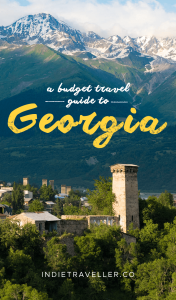
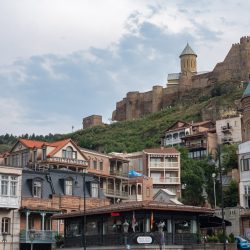
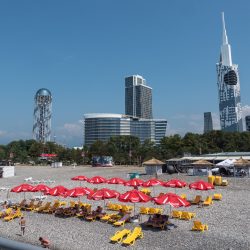
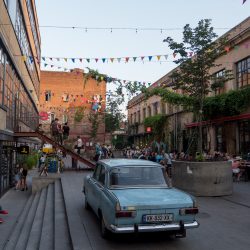




How do you feel about homophobia, russophobia, or more generally nationalism, racism and intolerance that are the core values of Georgian culture?
It has been rather disturbing watching news where extremist Orthodox priests attacking and beating up journalists and gays with the support of the Church and the ruling mafia.
Yeah I saw the same disturbing news this week. It’s very sad and I hope it doesn’t represent all of Georgia.
To be honest, from a traveler’s perspective, I don’t think we can expect all countries to be perfect or move at the same speed. Otherwise, half the world would quickly be ‘banned’ for some reason, including some Western ones. I think exposure to different cultures and values is what can slowly bring progress.
Though I would probably be shocked if I were living in Georgia and witnessed the recent events.
Hi Marek.
This is Tony and Carolyn.
We are campervanners currently touring Turkey. Thanks for a very interesting site and info on Georgia. We will drive up from Fethiye in a few days, and cross over to Batumi with our dog Holly.
Your information is inspirational, and we are soooo looking forward to being there, and we have no worries about accommodation…lol… ;).
Will be sharing your website on our FB Group…Wheely Living.
Thanks again.
Tony and Carolyn 🙂
Hi Tony and Carolyn… it looks like you are on a fantastic journey. I did see on your group about your dog Holly, I’m so sorry to hear. I imagine this puts a real damper on things, though I hope you will still find inspiration wherever you end up going next. I’ll be sure to follow your group
Nazda Marku, thanks for info about Georgia, and Armenia.
Methinks a visit is definitely on for 2022.
Cool information for the next journey!
Great destination for economical trip
Hi Marek. Very interesting – thank you
We are in Australia. Where would you suggest we fly into?
What is tbe best time of year to visit? Would July be ok
I visited in June and loved it (though outside the mountains some days were extremely hot, like 40C).
Try searching flights to Istanbul. Lots of international connections, with only a short hop to Georgia. Otherwise try flying to a European destination that has flights to Tbilisi. There is a list on Wikipedia.
Thank you for the great post 🙂
Do you have any recommendations for cheapest months to fly to Georgia? Do flights shift much by season there?
I’m not sure, but you can find out! See this tip here 🙂
Hello,
This blog is very nice information for the best travel in Georgia looking beautiful. thank you for share this blog
Hi Marek! I really enjoyed reading this.. I’m so keen to explore Georgia as it has always fascinated me with its minimal tourism influence (other than the resort town you explained which I never knew existed until now!). Thank you for all the handy info. Time to check out flights 🙂
Glad you enjoyed this post, Mandy! Georgia does still feel like a very pure place. The only strongly ‘touristy’ thing I noticed was a lot of people offering boat tours along the river in Tbilisi… but they all assume you’re Russian 🙂